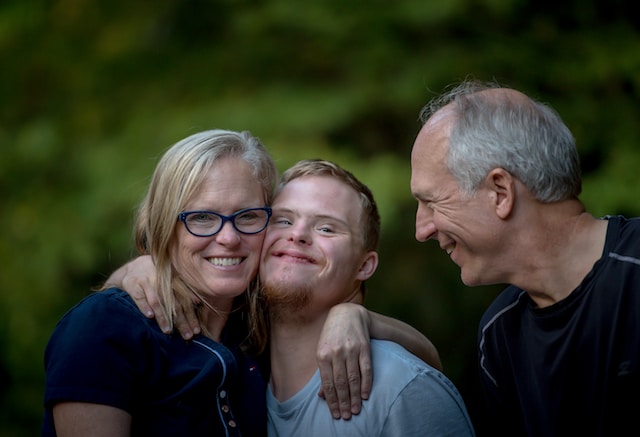Building Collaborative Relationships with Families of Children with Disabilities

Learning Objectives
- 5.1 Understand disability as a social construct
- 5.2 Understand that disability systems and structures are inherently inequitable and biased
- 5.3 Name and describe two different models of disability
- 5.4 Understand the importance of and describe some best practices when collaborating with families of children with disabilities
Introduction
According to the Merriam-Webster dictionary, a social construct is “an idea that has been created and accepted by the people in a society” (Merriam-Webster, n.d.). When discussing social constructions, it is common to talk about the ways in which race has been socially constructed across history. So often, though, when disability is discussed, it is seen as something biological and real, and certainly not something that has been socially constructed. When thinking about disability broadly and in connection with collaborating with children with disabilities and/or their families, it is important to remember that how we think about disability has also been socially constructed over time and space. These understandings of disability impact how family members, professionals and others view children with disabilities, including how each of us as individual members of society think about and interact with disability. Annamma, Connor and Ferri (2013) provide two examples that illustrate disability as a social construct. One example is the line between someone who has poor eyesight and someone who is blind. This imaginary fine line between the two categories is something that has been shaped and determined by a variety of factors. Another example that highlights how disability has been socially constructed is in the history of the category we know of today as intellectual disability. Prior to 1973, people with an IQ of 85 or less were identified as having an intellectual disability. In 1973 this number changed and the official cut-off for an intellectual disability became 70 (Annamma, Connor & Ferri, 2013, p.3 ). While nothing had changed about the people in question, anyone who had an IQ that fell in the range of 71 to 85 was suddenly no longer seen as having an intellectual disability. If disability was not a social construct, it would not have been possible to change the IQ requirements for the definition of intellectual disability and suddenly change the disability status of many people across the country.
Pause to Reflect!
Discuss the following questions.
- Re-read the introduction.
- Identify at least one additional example of disability as a social construct.
Media Attributions
- Parents and child with disability © Photo by Nathan Anderson on Unsplash is licensed under a CC0 (Creative Commons Zero) license

